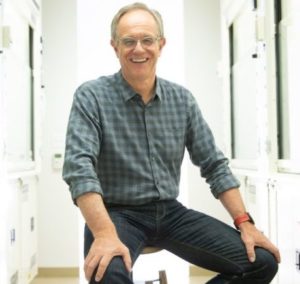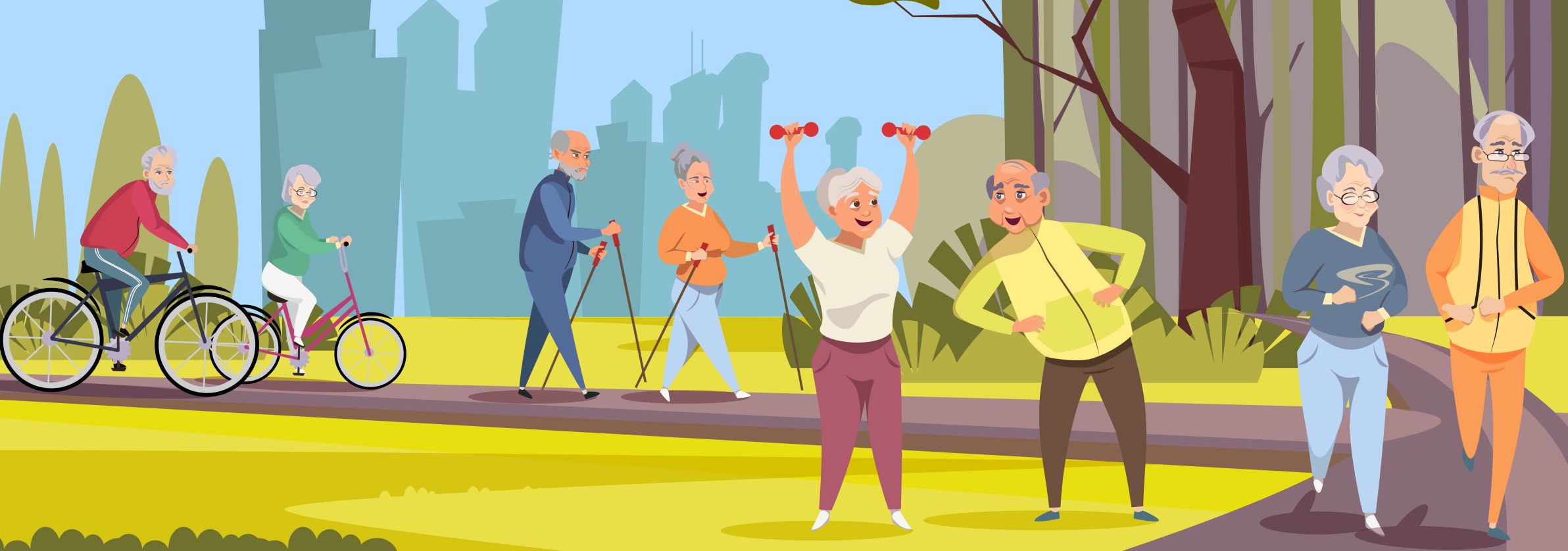by Buck Institute
September 21, 2020 . BLOG
Variety is the Spice of Fitness
 By Eric Verdin, President and CEO of the Buck Institute
By Eric Verdin, President and CEO of the Buck Institute
The COVID-19 pandemic has brought incredible challenges and changes to our routines over the past few months. Unfortunately, the virus has not been effectively contained and a vaccine won’t be widely distributed for months. For the foreseeable future, living with reduced social contact and spending more time in and around our homes is the new normal. With such constant proximity to our refrigerators, many folks are lamenting the dreaded “COVID 15” weight gain. I’ve been focusing on my exercise regimen in an effort to combat this.
Staying fit through regular exercise is one of the most important things we can do for our health and wellbeing anytime, but it’s even more important now. We know that consistent exercise provides an immune boost, and that obesity seems to be a strong risk factor for serious complications from COVID-19. Given this, now seems the perfect time for people to adjust their routines to incorporate new forms of exercise. For those who are going through this process, I want to remind them of an article from several months ago reporting some interesting data about type of exercise and obesity risk.
Its not surprising that those meeting the recommended amount of physical activity were 50% less likely to be obese than those who did not. But it is a little surprising to find that those engaging in both aerobic- and resistance-style exercise were an additional 20% less likely to be obese than those who just did one style.
Another surprising tidbit was that those doing double the recommended minimum of aerobic training, but no strength training, saw no further reduction in obesity. This means that those jogging for 300 minutes (5 hours) a week had similar obesity rates as those jogging 150 minutes (2 and a half hours) per week. They also more likely to be obese than those running 2 and a half hours plus doing strength training twice a week. This is a hint that there’s something about the combination of exercise and not so much the time spent that matters.
To be clear, those meeting both the aerobic and strength-training standards are exercising quite a bit. A minimum of 150 minutes of aerobic exercise a week is more than 35 minutes 4 times a week, plus doing at least two sessions of strength training. When we reflect back on normal times, filled with commutes and other obligations, it can actually seem surprising that 20% of surveyed adults met these criteria (though 40% of adults did not meet the criteria for either type of exercise).
A more recent article emphasizes the benefits of exercise that pushes you beyond your comfort point. The New York Times reported on a study comparing walking efficiency between older walkers and older bike riders. Bike riders reported higher average exercise intensity and were more “efficient” walkers, meaning they consumed less oxygen and felt less exertion from walking. This suggests that even if you “use it” by walking regularly, you could “lose it’ in fitness by not pushing your aerobic capacity.
Of course there remain quite a few questions about causality. These datasets don’t conclusively say that doing both aerobic and strength training reduces obesity risk. Instead, it guides us to further questions: what cellular pathways are activated by aerobic and strength training? How do these pathways differ and how do they overlap? Do the differences in obesity risk correlate to other health differences? Why doesn’t more aerobic exercise further reduce obesity risk? And, importantly for our purposes at the Buck, what are the long-term health benefits to engaging in both aerobic and strength training?
As a scientist I love both the questions and the answers, but I know that as we age we care most about the answers. What is the main takeaway from this pair of studies? For me, it is that we should build diversity into our exercise routines and continue to push ourselves. Biking is great, and so is yoga! It sounds fun to hike one day and lift weights the next! Varying your workouts can also help train different sets of muscles and help avoid exercise plateaus.
I also want to reassure those who cannot (either because of physical limitations or other constraints) devote more than 3 hours to exercise each week. These studies capture one moment in time from many different people and spit out a single outcome. There is surely a huge range of fitness and health levels within every exercise group—even those who barely exercise at all. Just as we know exercising a ton doesn’t guarantee healthier outcomes at the individual level, low levels of exercise don’t guarantee poor health. What’s most important is using this information to examine your own fitness baseline and thinking about how to improve it. Do you already run 5 miles each morning? Maybe trade out one or two runs for weight training. Do you find it a challenge to get up a flight of stairs? Keep practicing until you can make it up 3 flights of stairs, and then lift some 5 lb weights (or cans of beans, as weights have been in short supply during the pandemic).
The idea of taking on new challenges right now seems even more onerous than usual—isn’t daily life challenging enough? I totally understand that reaction, and to a certain extent I share it. However, the science is so clear on the importance of exercise for healthy aging—it has positive effects on every aspect of health that we can measure. Learning more about the specifics of optimizing exercise for health is the best tool we have to make sure we use our time and energy wisely. Our individual health factors are all different, but we can all work to follow a positive health trajectory—keep improving your own personal habits and you know you’re doing good for your body and your mind.

SHARE